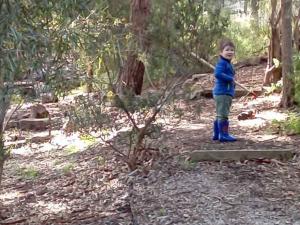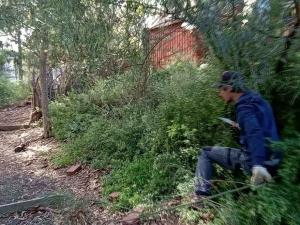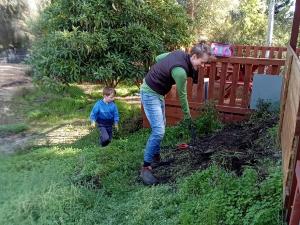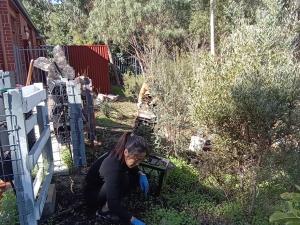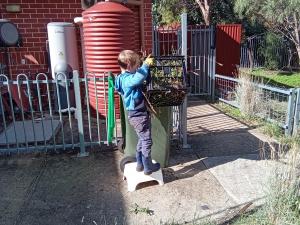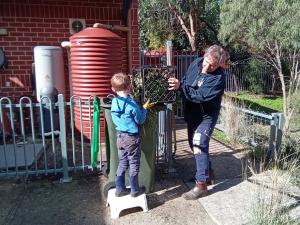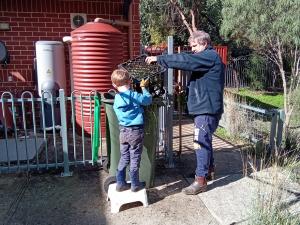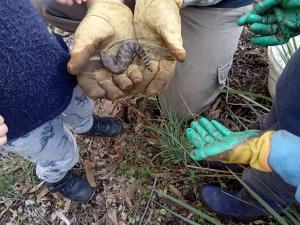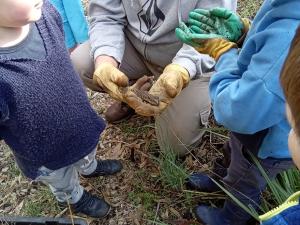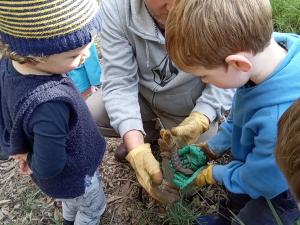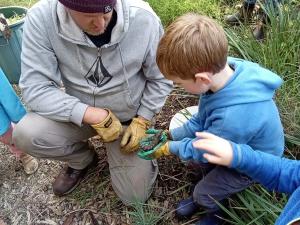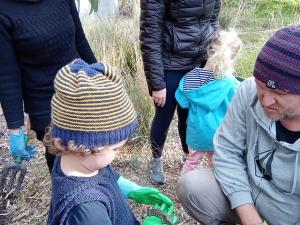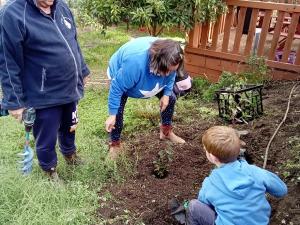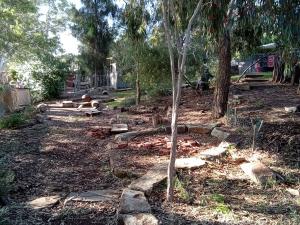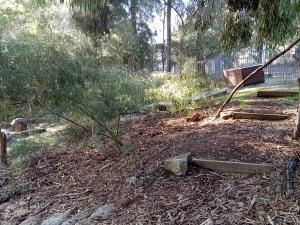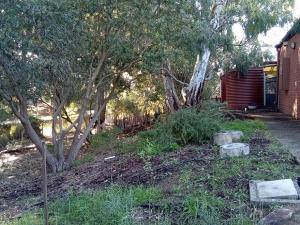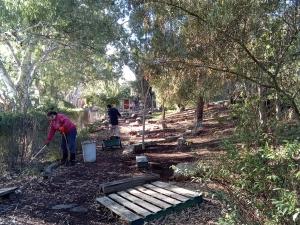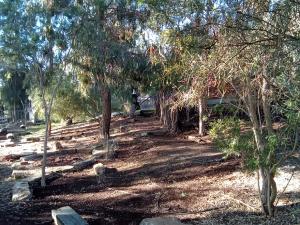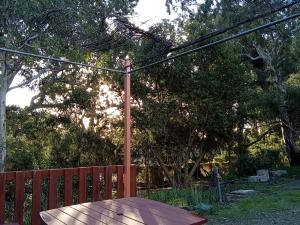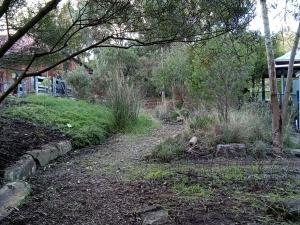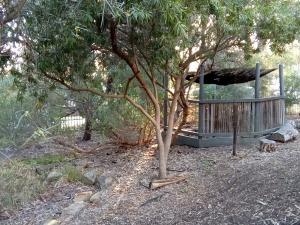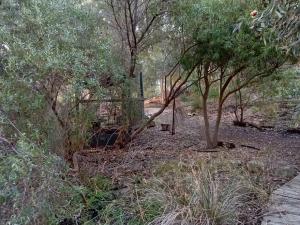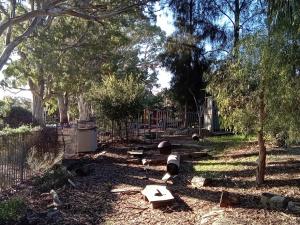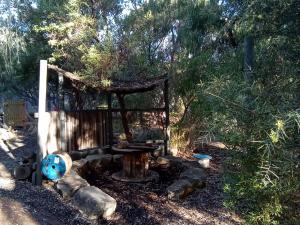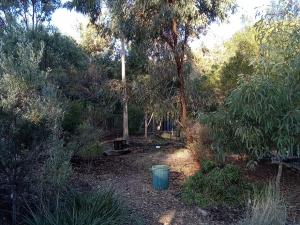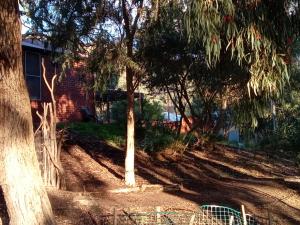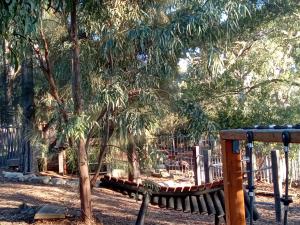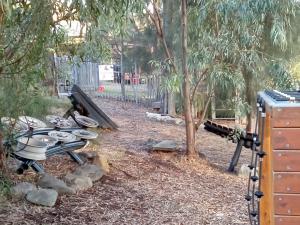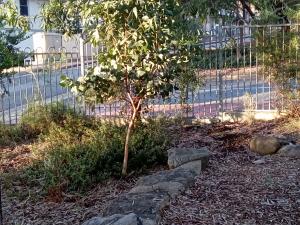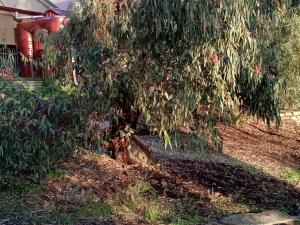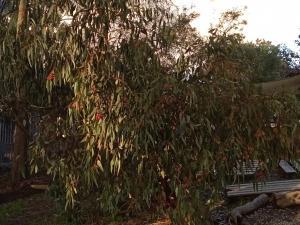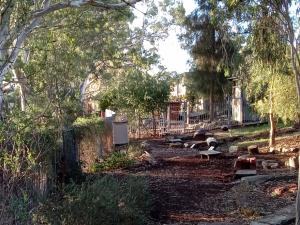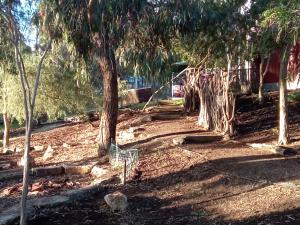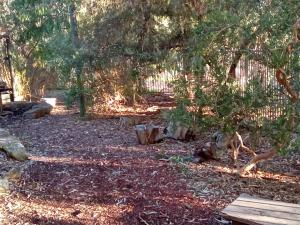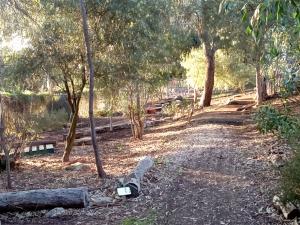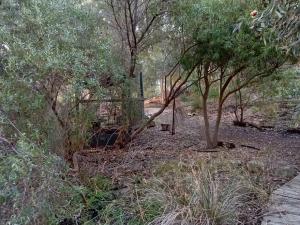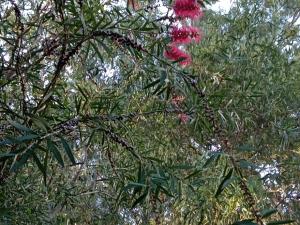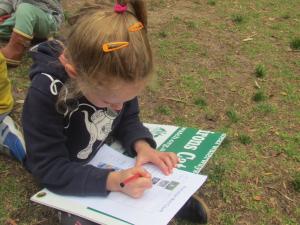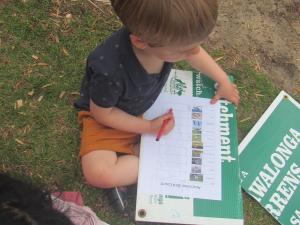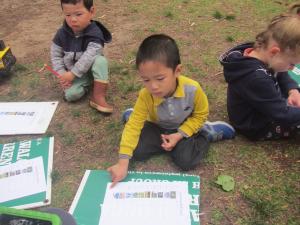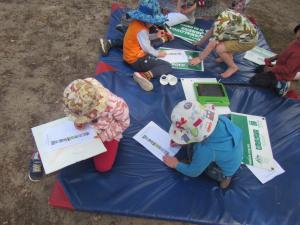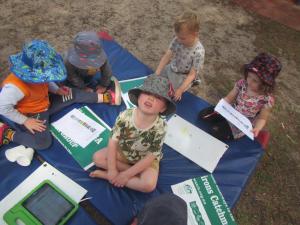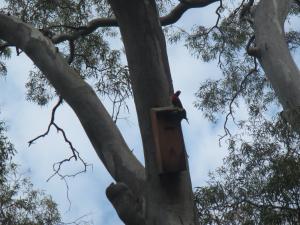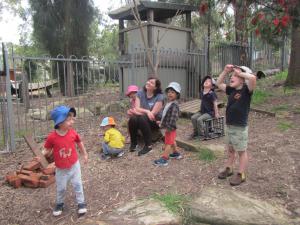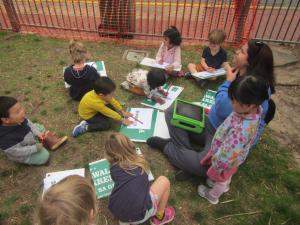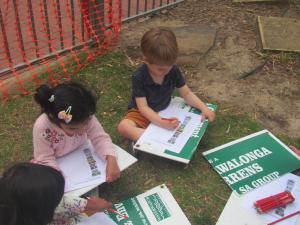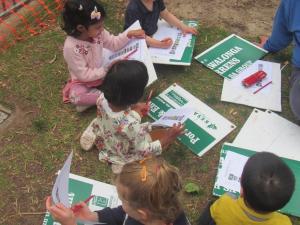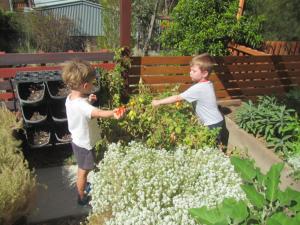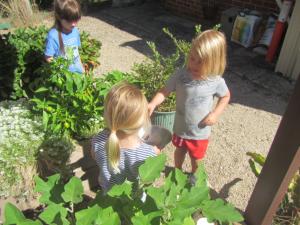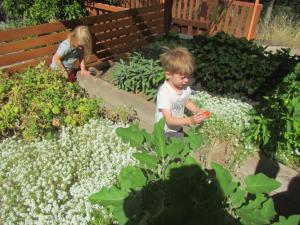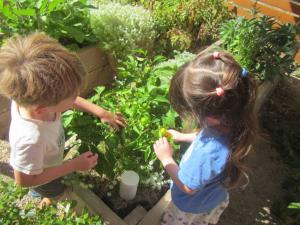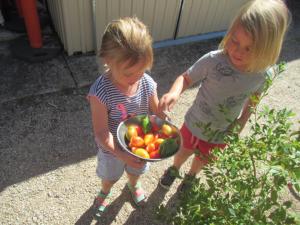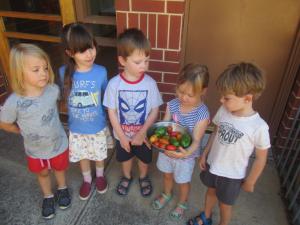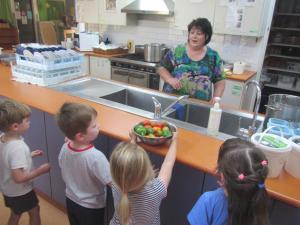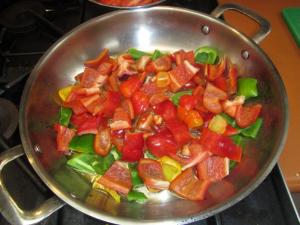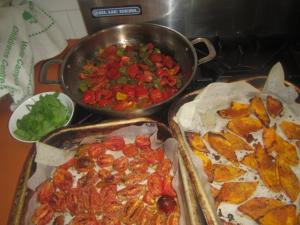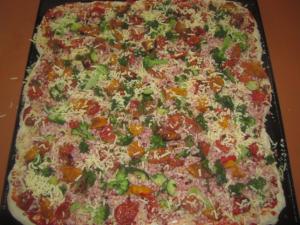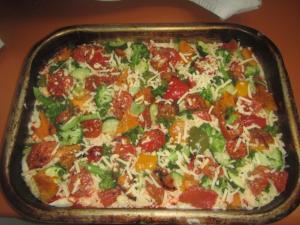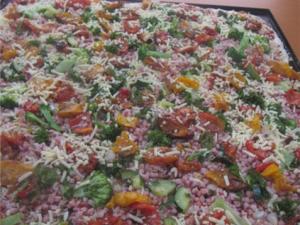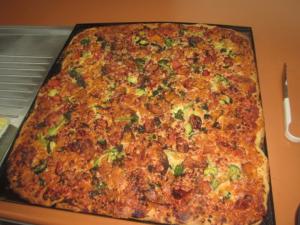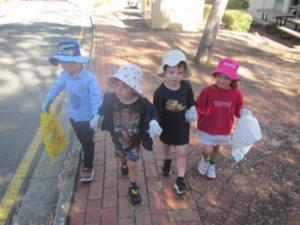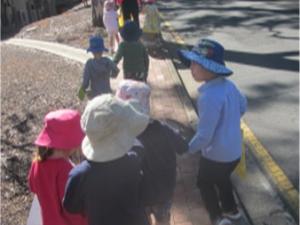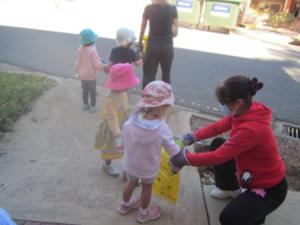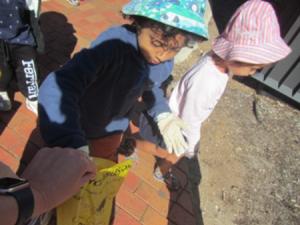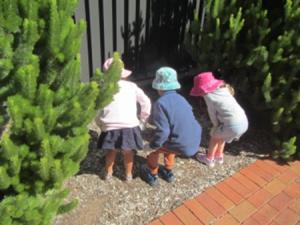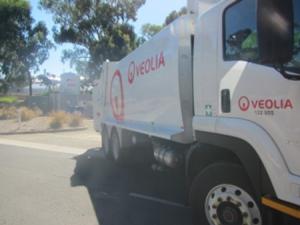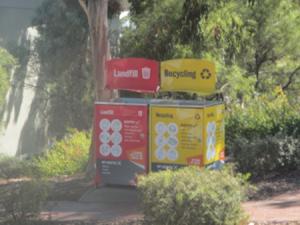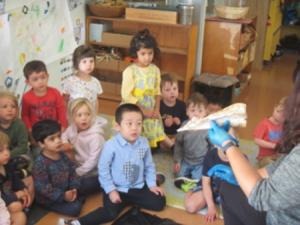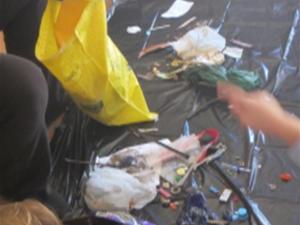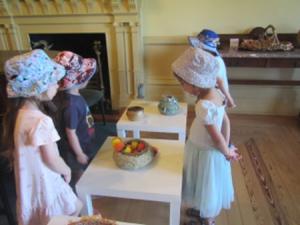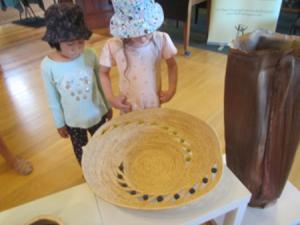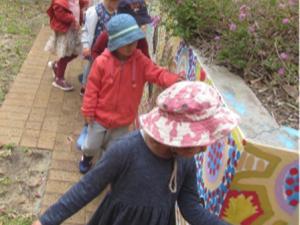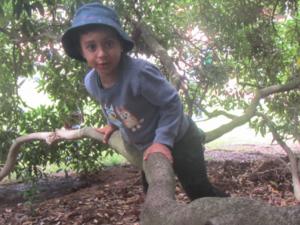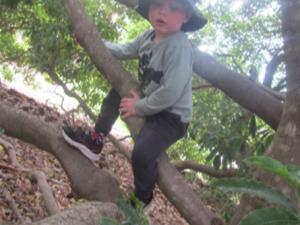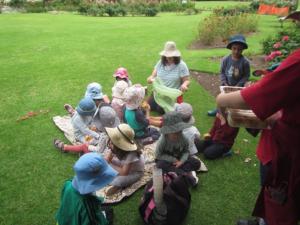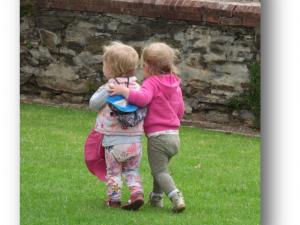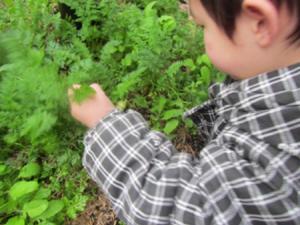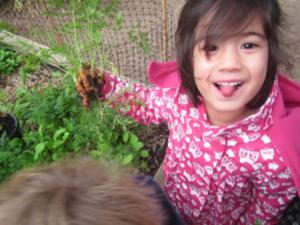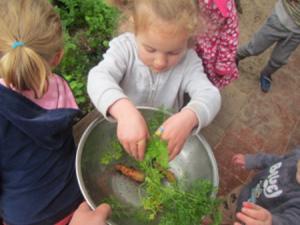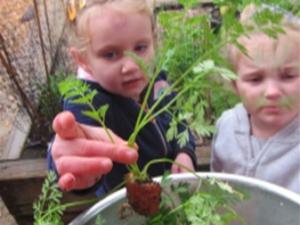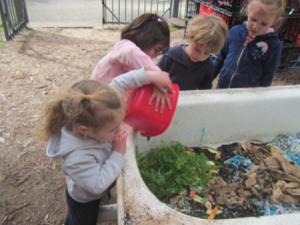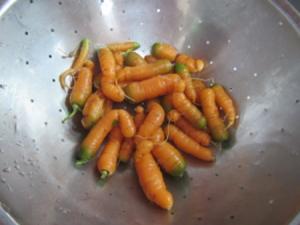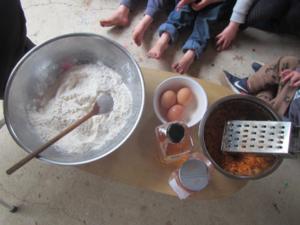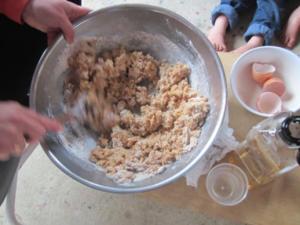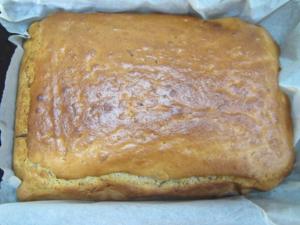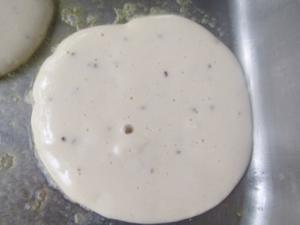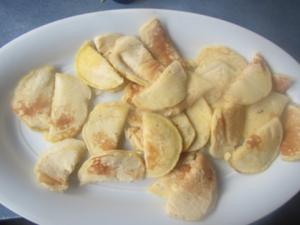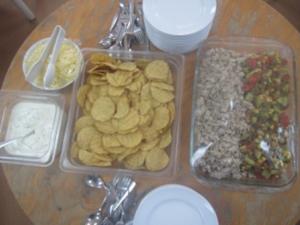Education for Sustainability
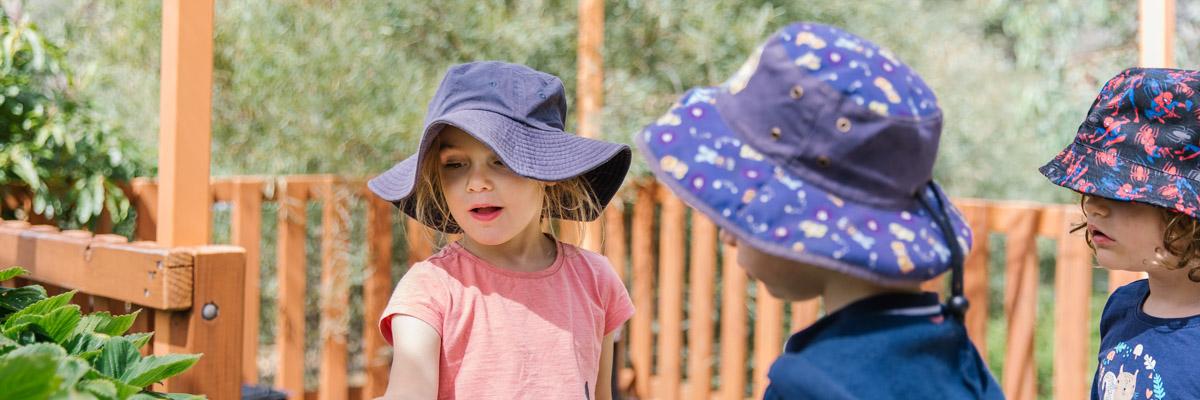
UNESCO says “As early childhood education is about laying a sound intellectual, psychological, emotional, social and physical foundation, it has an enormous potential in fostering values, attitudes and skills that support sustainable development.”
Sustainable futures for children
Waite Campus Childrens Centre is committed to exploring and implementing ways to save water and energy, reduce waste, expand children’s environmental education and foster sustainable lifestyles.
The approach to education for sustainability (EfS) for young children is an experiential one providing opportunities for child-initiated experiences that support children to learn through discovery, using very day teachable moments. Children are actively involved in growing and monitoring plants, recycling, water and energy saving.
Waite Campus Childrens Centre is carbon friendly and has offset their carbon usage for each year since 2007 through the purchase of renewable energy credits from Climate Friendly.
Waite Campus Childrens Centre in an AUSSI SA site. Through this process we have looked at our guiding principles and developed a Site Environment Management Plan (SEMP) which details our action plans.
Education for Sustainability curriculum
Education for Sustainability (EfS) is integrated throughout the curriculum. Educators use intentional teaching both at planned group times and during play experiences across the day to explore and enhance children's understandings.
The Centre employs an Education for Sustainability Teacher during Term Time, who is responsible for working with children in Pilyabilyangga, the outdoor play spaces and the kitchen gardens to observe and document the natural environment and seasonal changes, weed, mulch and plant as required, and document the curriculum and learning. The role also includes building and maintaining knowledge and understandings of the traditional owners of the land, and for maintaining the Centre's Site Environment Management Plan (SEMP).
WCCC site environment management plan 2020
- You can read the WCCC Site Environment Management Plan 2019.
- You can read the WCCC Site Environment Management Plan 2020.
2020 Education for Sustainability reports
2021 Education for Sustainability reports
Awards
KESAB WOW Award
Waite Campus Childrens Centre is proud to have received an award at the 2016 KESAB Expo as the Early Years site with the greatest reduction of waste to landfill. Between July 2014 and July 2016 we reduced our waste by 43%.
Waite Campus Childrens Centre thanks the University of Adelaide's Office of Sustainability for it's Green Projects funds which have enabled us to upgrade to a 10KW solar PV system.
In 2011 Waite Campus Childrens Centre received a commendation award from SA Water for water saving strategies and 'Most Outstanding Site' for Education for Sustainability award from NRM Education.
Waite Campus Childrens Centre is proud to be the winner of the gold award in the Schools and Communities section of the Adelaide Botanic Gardens Native and Sustainable Gardens 2011.
You can read the story of how we achieved this: The making of Pilyabilyangga, the butterfly place
Working Bee
September 2023
Saturday 23rd September brought another working bee.
Have a look at the work that was done here: Working Bee
Working Bee
May 2023
Saturday brought a chilly day with only a bit of rain, but the recent rains had made the ground lovely and damp, great for pulling out weeds.
A team of families and educators donated their time and spent hours working together to weed, prune, rake, and plant together to make Pilyabilyangga and the Adventure Playground look fantastic and be inviting and safe for play.
It was a fantastic afternoon and doesn't the area look great!
Australian Bird Week 2022
October 2022
Celebrating National Bird Week is an annual event at Waite. This is the fourth year that the children and educators have undertaken bird surveys and contributed to the data collection about the birds that live around WCCC. The children were very excited about bird watching again this year. During Bird Week it occurs in a more formal way than what usually happens at the Centre as bird watching is always an interest of the children. They were able to confidently recall last year’s bird watching sessions and were eager to get their observation record sheet and participate. The passionate children from Room 3 joined me on the grass area and also spent some time during the morning down in Pilyabilyangga observing birds. The children had their own piece of paper to record the birds they saw and I had the tablet to record our sightings on the official survey. Each time a small group of children joined in and some children actively participated every time. Some of the experienced Room 3 bird watchers who had well developed bird identification skills were able to help other children identify which bird flew over and also how to record their observations on their page.
Over the week, we identified 10 different types of birds including magpies, sulphur -crested cockatoos, pigeons, crows, galahs, eastern rosellas, welcome swallows and yellow tailed black cockatoos. The most observed birds over the week were the rainbow lorikeet and the noisy miner. To add to the learning experience we continued to build on the use of Kaurna names for birds which included; rainbow lorikeet which is Ngauwaka, Duck which is Tarana and Magpie which is Kurraka.
We now have lots of knowledgeable bird watchers amongst Room 2 and 3 children and we will continue to spend time observing birds and other living creatures that live in and around us here at childcare.
Harvesting ingredients for pizza
March 2022
The vegetable garden is booming at the moment and there were some tomatoes and capsicums that were ready to be picked. A small group of children joined in with me to pick the ones that were ready. We chatted about what type of vegetables we were picking and what Grace could use them for in the kitchen. After taking a bowl full of beautiful fresh produce into Grace, we had a look at the menu and we decided that they would be perfect ingredients for the pizza that Grace would be cooking for lunch's tomorrow. The next morning, Grace prepared the vegetables and added them to the pizza. What a treat it was to have pizza with our freshly grown tomatoes, capsicums and basil on them. Yummmm!!
‘We are cleaning up Mother Earth’
March 2022
Clean Up Australia Day provides the opportunity to educate and inspire children to care about Mother Earth and reflect on the impacts that humans have on her. This year the Room 3 children and educators again took the opportunity to embark on a walk around the campus to collect any litter we could find. We all put gloves on before we left and then it was time to go on our journey to ‘clean up Mother Earth’. With excitement in their step, the children had their eyes peeled for rubbish and it wasn't long before we found some. The children enthusiastically picked different bits up and put them in the bags. As we walked, we talked about and looked at different things we saw. We saw a truck collecting the landfill bins, told people walking by what we were doing, collected different coloured feathers and also saw some ducks down on the grass area. We had nearly finished our loop around the campus and we were nearing child care. Our bags had some rubbish in them and the pace of our walking had definitely slowed.
Once back at childcare we had a look at the rubbish we collected. The bags were emptied onto the floor and we sorted it out. First we picked out the compost items– dirty paper, paper towel, tissue and an apple core. Recycling was next and that included 3 metal items and a couple of plastic bits. The bits that were left over were going in the landfill bin - small broken bits of plastic and a couple of really dirty pieces of soft plastic.Great work Room 3 children and educators. What respectful and caring behaviour you showed by helping to take care of Mother Earth by cleaning her up.
A Walk to Urrbrae House
February 2022
A Fringe event at Urrbrae House showcasing different items from Basketry SA woven using a variety of natural materials was the perfect event to take the preschool children to explore what can be made from natural materials with some creativity. The children were very interested in the birds and eggs that had been made and even noticed small details such as bees wax in one item and stones and feathers in other ones.
Pollinator Picnic
November 2021
Australian Pollination Week provides the opportunity to raise awareness, learn about and explore the pollinators that live around us. Pollinators play an important role in the food that is grown for us to eat and we need to protect these insect pollinators in order to safeguard our food security. To celebrate the week, we decided to have a whole centre walk around campus and a Pollinator Picnic down in the Rose Garden. The weather was perfect for the day. Each room set off on their own journey with Room 3 and Room 2 checking out the Mural before making their way down to Community garden and grass area near Urrbrae House.
Children ran, rolled, jumped, chatted, investigated, observed pollinators around us, sat, relaxed and explored during the picnic. It also provided the opportunities for siblings, mums and dads to meet up and play with each other. After lots of fun, we all moved to the shaded area in the Rose Garden for our Picnic. Grace had designed a menu for the day that highlighted foods that require pollination.
From Garden to Cake
August 2021
Today was the day it was time to harvest some of our carrots. The children have been noticing them growing over the last couple of months and have commented that they could see little bits of orange poking out of the soil. Children were excited when I invited them to pull out a carrot. The children took turns pulling out one carrot, ensuring that there was going to be enough for their friends to have a turn as well. After the harvest, the green tops were pulled off and taken down to the worm farm so that the worms could enjoy a carrot top feast. Next it was time to wash all the soil off before the carrots were peeled ready to be grated. This process took a bit of time and the small group that was gathered around laughed at the funny shapes of the carrots and also chatted about their gardens at home. The carrots were grated into a bowl and then they were ready to be added to the cake mixture at group time.
Group time came and the cake mixture was made.
The ingredients were added one by one and we talked about each ingredient as it was put into the bowl. We also had a smell of the delicious cinnamon that was one of the ingredients. The ingredients in our carrot cake were- Flour, sugar, eggs, cinnamon, oil, carrot, water and baking powder. After the right consistency was achieved with the mixture, it was off to kitchen so that it could be cooked in the oven. Afternoon seemed such a long time away but it soon arrived and the children enjoyed the delicious cake with their friends.
National Aboriginal and Torres Strait Islander Children’s Day 2021
‘Ninna Marni welcome, welcome ,welcome, Ninna Marni, welcome, Here today
We are on Kaurna Land, Kaurna Land, Kaurna Land,
We are on Kaurna Land Here Today’
This is the song we sing in Room 3 at group time to acknowledge that we learn and play on Kaurna land.
As a part of the celebration of National Aboriginal and Torres Strait Islander Children's Day we focused our learning on native indigenous food. In the morning we cooked wattle seed pancakes. The pancakes were cooked on the Room 3 verandah and shared with the whole centre. We discussed how wattle seeds grow, where we can find them and we smelt the roasted and ground seeds. They smelt like a combination of coffee and chocolate. For lunch we had crocodile nachos. We all sat down together at lunch time and talked about the food we were eating. Most of the children decided to try it and some children found that it was really delicious and enjoyed a couple of serves. Afternoon tea was the last meal of the day that incorporated indigenous ingredients. We ate delicious lemon myrtle muffins. The fragrance of the muffins attracted the children in and they all enjoyed the delicious muffins. We are very fortunate to live in a country where the First Nations people have longest continuing culture on the planet. As educators, we have the important role in providing opportunities for the children to learn about the Indigenous people of Australia.

